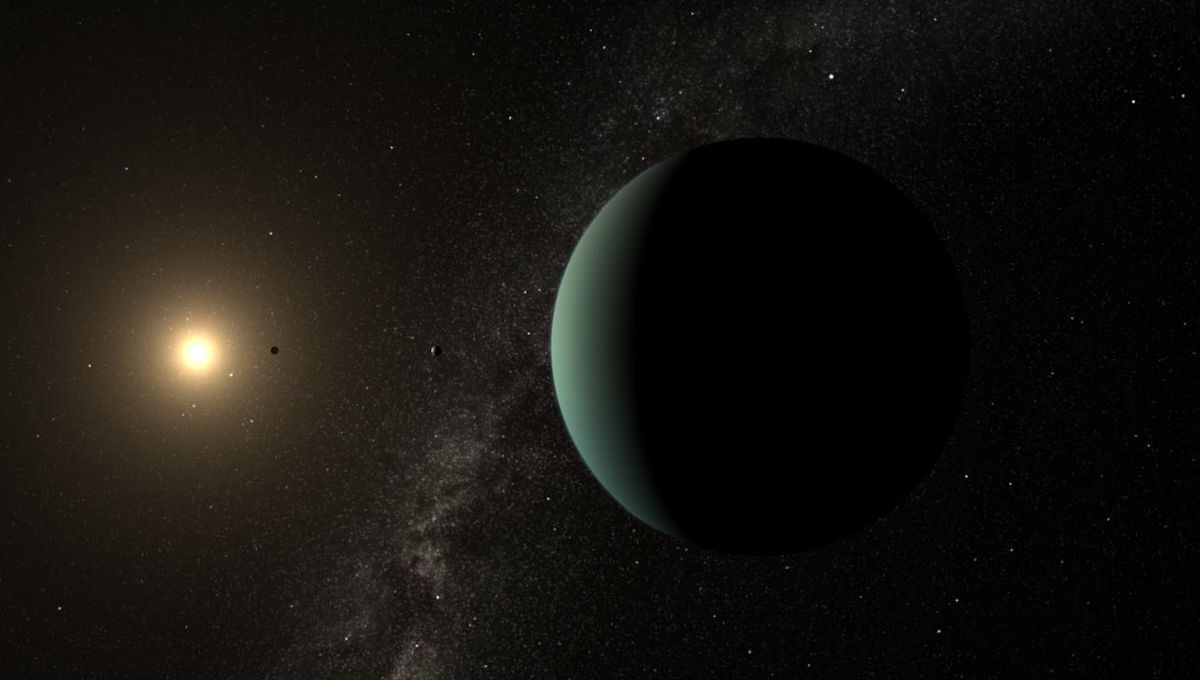
A suspected planet that appears well-suited to life has had its existence confirmed – and it’s very much in our neighborhood, galactically speaking. Unfortunately, the planet HD 20794 d does not transit from our perspective, cutting off our primary method for checking the atmosphere of planets like this, but advances in telescopes will soon make other options available.
ADVERTISEMENT GO AD FREE
Astronomers have several criteria when looking for planets that could possibly host life. So far, they are yet to find all of them in one place; the planet LHS 1140 b has been considered the; “Best place to look for life beyond the Solar System,” because it met more than any other, but it now has a competitor in the form of HD 20794 d. The fact they tick somewhat different boxes, so their strengths and weaknesses vary, is an added bonus.
The star HD 20794 (also known as 82 G Eridani) is very sunlike, just a little cooler and less massive than our own star. Three suspected planets were announced as orbiting it in 2011, all far too close to the star for life.
Since then, grave doubts have been cast on the existence of one of the original claims – but that has been more than made up for with the possibility of another planet orbiting within the habitable zone. The first signs of such a planet, known as HD 20794 d after the demotion of one of the originals, were reported by the University of Oxford’s Dr Michael Cretignier and colleagues in 2023, but considered quite tentative at the time.
The team was not going to let a prize like this get away from them. “We worked on data analysis for years, gradually analysing and eliminating all possible sources of contamination,” Cretignier, a co-author of the new study, said in a statement. Combining original data from the High Accuracy Radial Velocity Planet Searcher (HARPS) spectrograph at La Silla Observatory in Chile with fresh information from its successor ESPRESSO, the team of researchers has now published what they argue is convincing evidence the find is real.
“For me, it was naturally a huge joy when we could confirm the planet’s existence,” Cretignier said. “It was also a relief, since the original signal was at the edge of the spectrograph’s detection limit, so it was hard to be completely convinced at that time if the signal was real or not.”
ADVERTISEMENT GO AD FREE
Given the uncertainty as to whether Mars has ever had life, a planet that averages about the same amount of light exposure might seem a poor prospect. However, potential Martian life was hindered not only by location, but the planet’s small size, which prevented it from holding onto the atmosphere which might have provided a strong Greenhouse Effect. That shouldn’t have been a problem for HD 20794 d, which has a mass at least 5.8 times that of our planet, making it a super-Earth in astronomers’ categorizations.
HD 20794 d does have one potential obstacle to life: its orbit is elongated enough to cause substantial variations in the global temperature. At its closest, it gets almost as close to its star as Venus does to the Sun, while the furthest part of its orbit is greater than that of Mars. On its own, this would cause a specific site on the planet to experience seasons much greater than Earth’s. However, if the planet has Earth-like axial tilt, the effect might be amplified in one hemisphere and damped in the other.
Whether life could find a way under such circumstances is something we don’t know.
ADVERTISEMENT GO AD FREE
HD 20794 d doesn’t appear to transit across the face of its star as seen from our location. Consequently, we will not be able to check for the presence of an atmosphere with the JWST, as was recently done with LHS 1140 b.
However, HD 20794 d makes up for that by being just 20 light-years away. That’s 40 percent of the distance to LHS 1140 b, and half the distance to TRAPPIST-1. Once the Extremely Large Telescope and Large Interferometer For Exoplanets (LIFE) are built, that shorter distance will be a big advantage for investigations.
It’s true we have an even closer planet within a star’s habitable zone in the form of Proxima b. However, its star’s very powerful flares have probably stripped Proxima b of an atmosphere. That’s much less likely to have happened to HD 20794 d, which orbits a notably quiet star.
As a bonus, HD 20794 is one of the very few stars known to have planets that can be seen with the naked eye, although you’ll need to be in the Southern Hemisphere under dark skies to see it. We have much to learn about HD 20794 d, but the star itself has at least one mystery, with two methods for estimating its age producing wildly different results: one slightly older than the Sun, the other twice that age.
ADVERTISEMENT GO AD FREE
“While my job mainly consists of finding these unknown worlds, I’m now very enthusiastic to hear what other scientists can tell us about this newly discovered planet, particularly since it is among the closest Earth-analogues we know about and given its peculiar orbit,” Cretignier said.
The paper is published in the journal Astronomy and Astrophysics.
Source Link: Planet With Requirements For Life Confirmed Just 20 Light-Years Away